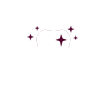The periodontal ligament and connective tissue that hold your teeth in their sockets can become stretched whenever there are extreme forces placed on the teeth. When the periodontal ligament become stretched, you may experience loose teeth. This can happen if you regularly grind your teeth at night, clench your jaws or have teeth that do not align properly. Any trauma to your mouth from a fall or accident can damage the ligaments and the bone around the tooth.
Consider any injury to your mouth area a dental emergency, and see your dentist right away.
Tooth mobility is never a good sign, but you don't have to lose your teeth. At the first hint of a loose tooth, see a dentist immediately. After a thorough examination, your dentist can determine the cause and severity, and he will present you with a treatment plan to save your teeth.
Kids
Losing baby teeth is a rite of passage for kids, and makes them feel like they're truly growing up. Typically, your child starts to discover "wiggly teeth" around the age of five or six. Some children, however, start losing their primary set later. It's important that they understand it's perfectly normal. This can be a very exciting time for your child and it helps to have a few good tips to get everyone through the process.





























